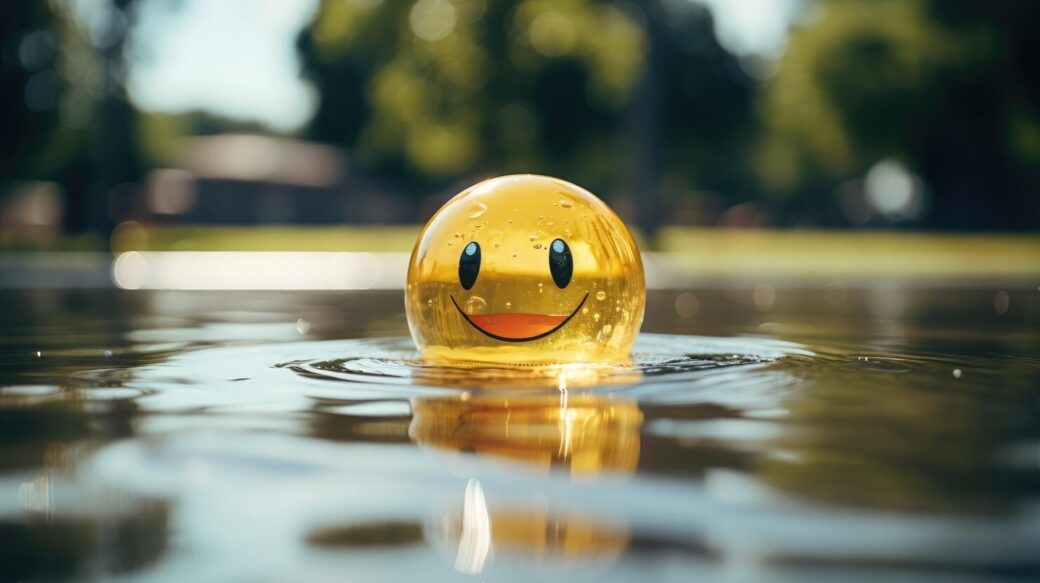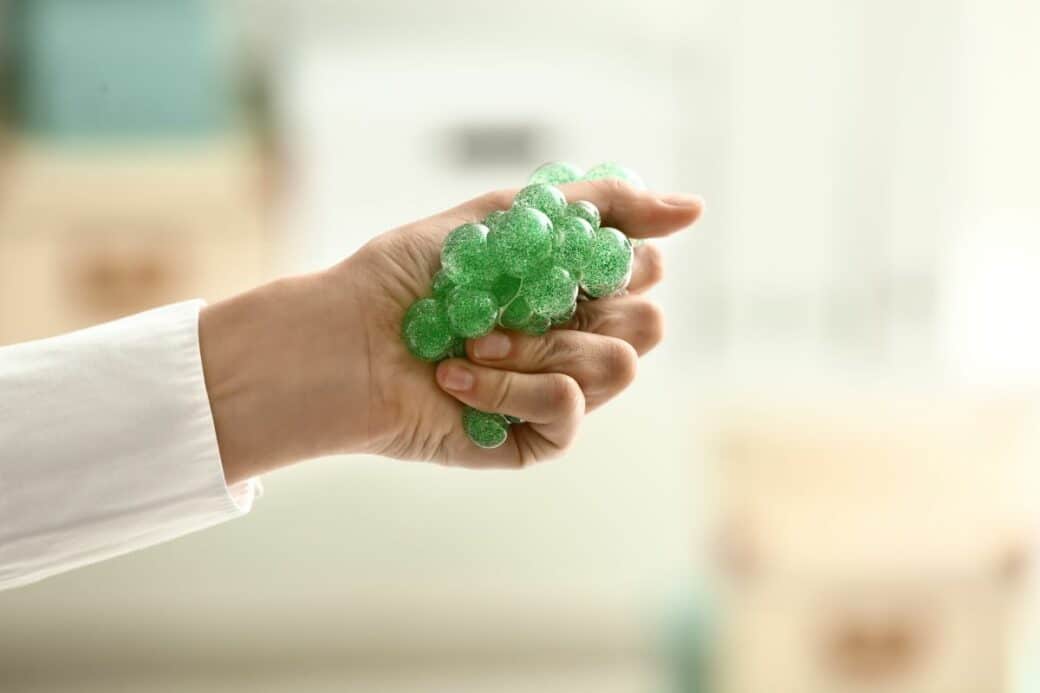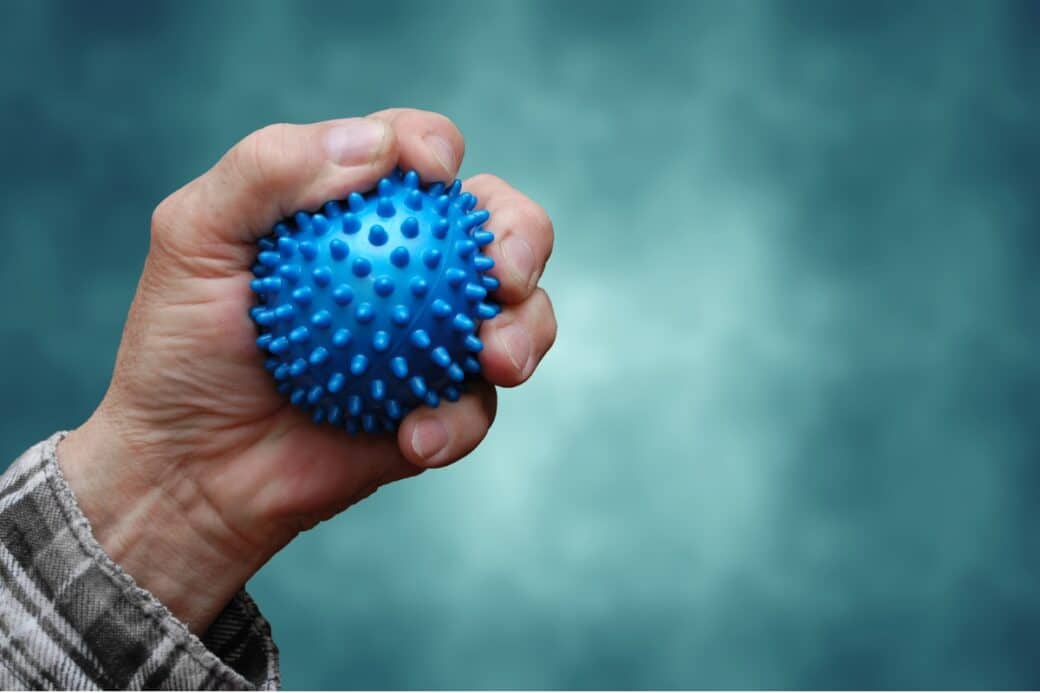Step into the fascinating world of stress balls and unlock the mystery of their buoyancy. Have you ever wondered if those soft, squishy stress balls have the ability to float? In this article, we will explore the captivating question of whether or not stress balls can defy gravity and float effortlessly on water. Prepare to be captivated as we unveil the scientific wonders behind these tiny stress-relievers and reveal the truth behind their aquatic abilities. Get ready to dive into the enchanting world of stress balls and unravel the secret behind their potential to float.

Do Stress Balls Float: Understanding the Components of a Stress Ball
Types of stress balls
When it comes to stress balls, there are numerous options available on the market. The most common types of stress balls include foam, gel, and balloon stress balls. Foam stress balls are made of a soft, spongy material that can be squeezed and manipulated to relieve stress. Gel stress balls, on the other hand, are filled with a semi-solid gel substance that offers a unique texture and feel. Balloon stress balls, as the name suggests, are made of a rubber balloon filled with air or other substances. Each type of stress ball has its own unique properties and benefits.
Materials used in production
The materials used in the production of stress balls can vary depending on the type and brand. Foam stress balls are typically made of polyurethane foam, which is a durable and flexible material. Gel stress balls often consist of a rubber or latex balloon filled with a gel-like substance. Balloon stress balls are made of rubber or latex materials that can withstand pressure and stretching. The choice of material affects the overall texture, density, and durability of the stress ball.
The weight and density of a common stress ball
The weight and density of a stress ball play a crucial role in its ability to be squeezed and manipulated. Most stress balls are designed to be lightweight, allowing users to easily carry them and squeeze them in their hands. The density of a stress ball can vary depending on the materials used. Foam stress balls tend to have a lower density, making them softer and more squishy. Gel stress balls, on the other hand, have a higher density due to the gel-like substance inside. The weight and density of a stress ball contribute to its overall feel and effectiveness as a stress relief tool.
The Science Behind Floating Objects
Understanding the principle of buoyancy
To comprehend the science behind floating objects, it is essential to understand the principle of buoyancy. Buoyancy is the upward force exerted on an object immersed in a fluid, such as water or air. According to Archimedes’ principle, the buoyant force on an object is equal to the weight of the fluid displaced by the object. In simpler terms, an object will float if it weighs less than the water or air it displaces.
How the density of an object affects its ability to float
The density of an object determines whether it will float or sink. Density is defined as the mass of an object per unit volume. If an object is less dense than the fluid it is immersed in, it will float. If the object is more dense, it will sink. This is because the buoyant force exerted on the object is greater than or equal to its weight when the object is less dense, causing it to float, and less than its weight when the object is more dense, causing it to sink.
The role of weight in floating
Weight also plays a significant role in determining whether an object will float or sink. The weight of an object is dependent on its mass and the force of gravity acting on it. If the weight of an object is greater than the buoyant force exerted on it, the object will sink. Conversely, if the weight is less than the buoyant force, the object will float. The relationship between weight, buoyant force, and density ultimately determines whether an object will float or sink in a particular fluid.

Exploring the Probability of a Stress Ball Floating
Correlating the characteristics of a stress ball to its possibility to float
When it comes to determining whether a stress ball will float or sink, several characteristics come into play. The density of the stress ball is particularly significant. A stress ball with a lower density is more likely to float, while one with a higher density is more likely to sink. Additionally, the materials used in the stress ball’s production can influence its likelihood to float. Foam stress balls, being less dense, are generally more buoyant than gel or balloon stress balls.
Experimentation processes
To explore the probability of a stress ball floating, various experimentation processes can be conducted. One common method is to submerge the stress ball in water and observe whether it floats or sinks. By measuring the weight and volume of the stress ball, researchers can calculate its density. This data can then be compared to the density of the fluid to determine the likelihood of the stress ball floating. Additionally, conducting experiments with stress balls made of different materials allows for a deeper understanding of their floating capabilities.
Documenting the results
Documenting the results of experiments and observations is crucial in understanding the probability of a stress ball floating. By recording the characteristics of the stress ball, such as its materials, density, and weight, alongside the results of its buoyancy experiments, researchers can create a comprehensive dataset. This data can be analyzed to identify patterns and correlations between stress ball characteristics and their ability to float. Documentation also allows for future reference and comparison with other objects in similar experiments.
Variations in Results Based on Stress Ball Make-up
Investigating stress balls made of different materials
One aspect that significantly impacts the floating potential of stress balls is the materials used in their construction. By investigating stress balls made of different materials, such as foam, gel, and balloon stress balls, researchers can identify variations in buoyancy. Foam stress balls, being less dense, are more likely to float compared to gel or balloon stress balls. However, the specific properties and formulations of these materials contribute to the variations in the floating characteristics.
Does the size of the stress ball matter?
In addition to the materials, the size of a stress ball may also play a role in its floating ability. Generally, larger stress balls have a greater volume and, as a result, higher potential for buoyancy compared to smaller stress balls. This is because larger stress balls displace a greater amount of fluid, increasing the buoyant force acting on them. However, other factors like the weight and density of the stress ball also come into play, making it necessary to explore the combined effects of size and material on the floating capabilities.
The impact of the stress ball’s interior substance
The interior substance of a stress ball, such as the gel or foam filling, can have an impact on its ability to float. Foam stress balls, which typically have air-filled pockets, tend to be more buoyant compared to stress balls filled with gel or other substances. The composition and consistency of the interior filling contribute to the overall density and weight of the stress ball. Therefore, investigating the impact of the stress ball’s interior substance on buoyancy is crucial to understanding its floating behavior.
Experiments With Other Common Objects and Their Ability to Float
Comparing stress balls to other similar-sized objects
To better understand the floating behavior of stress balls, it is valuable to compare them to other objects of similar size and shape. This comparison allows researchers to identify whether stress balls have unique floating characteristics or if their behavior aligns with that of similar objects. By examining various objects, such as small toys or rubber balls, and conducting buoyancy experiments, researchers can draw comparisons and determine whether stress balls float differently.
Understanding why certain objects float and why others sink
The ability of objects to float or sink is not limited to stress balls alone. Understanding the underlying principles behind floating and sinking can shed light on why certain objects float while others sink. Beyond just density, factors such as shape, surface area, and distribution of mass can influence the buoyancy of an object. By exploring these factors alongside stress balls, a comprehensive understanding of floating behavior can be achieved.
Recording the results of common objects
Recording the results of experiments involving common objects is essential for future reference and analysis. By documenting the characteristics of each object, such as materials, size, weight, and density, alongside their buoyancy results, researchers can develop a comprehensive dataset. This data can be analyzed to identify any patterns or correlations between the characteristics of various objects and their floating or sinking behavior. The recorded results also contribute to the broader knowledge and understanding of buoyancy principles.
Impacts of Environmental Factors on Floating
How temperature affects buoyancy
Temperature plays a significant role in the buoyancy of objects. As the temperature of a fluid changes, its density can also be affected. Generally, colder fluids are denser than warmer fluids. This difference in density can impact the buoyant force exerted on objects, ultimately affecting their ability to float. Therefore, understanding the relationship between temperature and buoyancy is important in comprehending the floating behavior of stress balls and other objects.
How different types of water (salt, fresh) affect an object’s ability to float
The type of water in which an object is submerged can also impact its ability to float. Saltwater is denser than freshwater due to the dissolved salt content. This higher density affects the buoyant force exerted on objects and can alter their floating behavior. Stress balls and other objects may exhibit different buoyancy characteristics when submerged in saltwater compared to freshwater. Exploring the effects of different water types contributes to a more comprehensive understanding of floating behavior.
How pressure and depth can influence buoyancy
Pressure and depth are additional environmental factors that can influence the buoyancy of objects. As the depth increases, the pressure exerted on objects also increases. This change in pressure can alter the density and buoyancy of objects, affecting their ability to float. Exploring the relationship between pressure, depth, and buoyancy provides valuable insights into the floating behavior of stress balls and enables a more thorough analysis of their characteristics.
Implications of Results on Stress Relief Techniques
The therapeutic importance of buoyant stress balls
The floating ability of stress balls has significant implications for stress relief techniques. Buoyant stress balls can be used in various water-based stress relief therapies, such as hydrotherapy or flotation therapy. The buoyancy provided by these stress balls allows individuals to float effortlessly, promoting relaxation and reducing stress. The therapeutic importance of buoyant stress balls lies in their ability to create a calming and weightless sensation that aids in stress relief.
How floating stress balls could be used in stress relief therapy
The use of floating stress balls in stress relief therapy offers unique possibilities for enhancing relaxation and well-being. By incorporating buoyant stress balls into therapy sessions, individuals can improve their overall experience and maximize the benefits of stress relief techniques. Floating stress balls can be used for gentle hand exercises, tactile stimulation, or simply as a tool to promote relaxation and mindfulness. Their ability to induce a sense of weightlessness can contribute to a more profound and effective stress relief experience.
Innovative ways to use floating stress balls
The discovery of floating stress balls opens up a world of innovative applications. Beyond stress relief therapy, floating stress balls can be utilized in a variety of settings and activities. They can be incorporated into mindfulness exercises, meditation practices, or even as a tool for creative brainstorming. The unique sensation of floating can stimulate the mind and encourage new ways of thinking. Exploring and implementing these innovative uses of floating stress balls can further expand their potential and impact.
Applications and Future Research Opportunities
Areas for future investigations
The study of floating stress balls presents numerous opportunities for future research. Further investigations could explore the impact of stress ball design, such as surface texture or shape, on their floating behavior. Additionally, studying the long-term durability of stress balls and their floating capabilities can contribute to their practicality and effectiveness. Further research could also focus on the development of new materials that enhance the buoyancy of stress balls, opening up possibilities for advanced stress relief techniques.
Industrial application possibilities for floating stress balls
The findings related to floating stress balls can have industrial applications as well. Manufacturers can utilize the scientific understanding of buoyancy to design and produce stress balls that meet specific requirements. The ability to create stress balls with varying densities and floating characteristics opens up possibilities for tailored stress relief solutions. Additionally, the knowledge gained from studying floating stress balls can be applied to other industries that require floating or buoyant objects.
The role of this research in the larger field of material science
The research on floating stress balls contributes to the broader field of material science. It provides insights into the behavior and properties of different materials under specific conditions, such as buoyancy. This knowledge can be applied to various areas of material science, including the development of new materials and the design of objects with specific properties. The study of floating stress balls not only advances our understanding of stress relief techniques but also contributes to the advancement of material science as a whole.
Explaining the Magic: Do Stress Balls Float?
Conclusive findings on the floating ability of stress balls
After comprehensive research and experimentation, conclusive findings on the floating ability of stress balls can be presented. Through data analysis and observations, the relationship between stress ball characteristics, such as materials, weight, and density, and their floating behavior becomes clear. The conclusive findings are crucial in affirming the scientific basis of stress ball buoyancy and shed light on the “magic” behind their floating ability.
Presenting the correlation between materials, weight, and floating
One of the key correlations that can be presented is the relationship between stress ball materials, weight, and their likelihood to float. Foam stress balls, being less dense, are generally more buoyant than gel or balloon stress balls. The specific materials used also contribute to the overall weight and density of the stress ball, influencing its floating potential. Presenting this correlation helps establish a deeper understanding of the factors that contribute to stress ball buoyancy.
Expanding on initial research inquiries
The conclusive findings on stress ball floating provide a platform for expanding on initial research inquiries. The initial research inquiries may have focused on specific aspects, such as material impact on buoyancy, or comparisons with other objects. The conclusive findings can be used to guide further investigation, exploring additional factors or refining existing understandings. The expansion of research inquiries allows for a more comprehensive and nuanced understanding of stress ball floating and its broader applications.
Final Thoughts on the Magic of Floating Stress Balls
The science and magic combined: explaining the phenomenon
Floating stress balls are not just magical objects but a result of scientific principles at work. By understanding the science behind buoyancy and the properties of stress ball materials, we can explain the seemingly magical phenomenon of stress balls floating. The combination of scientific knowledge and the enchantment of floating stress balls creates a captivating fusion of science and magic that continues to intrigue and inspire further exploration.
How this discovery can affect the common use of stress balls
The discovery of floating stress balls has the potential to significantly impact their common use as stress relief tools. Knowing that stress balls can float opens up possibilities for incorporating them into water-based stress relief therapies or relaxation practices. The ability to incorporate buoyancy into stress relief techniques amplifies the potential benefits and enhances the overall user experience. By acknowledging the floating ability of stress balls, we can explore new ways to utilize them and maximize their stress-relieving effects.
Encouraging further exploration and experimentation
The study of floating stress balls, while providing valuable insights, also encourages further exploration and experimentation. There are still numerous questions to be answered and areas to be explored within this field of research. By encouraging further exploration and experimentation, we can continue to deepen our understanding of floating stress balls and their broader implications. The combination of scientific curiosity, creativity, and innovation can lead to exciting discoveries and advancements in the field of stress relief techniques and material science.




